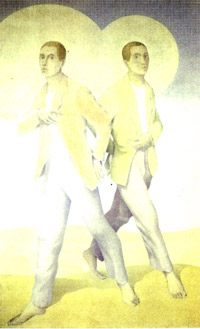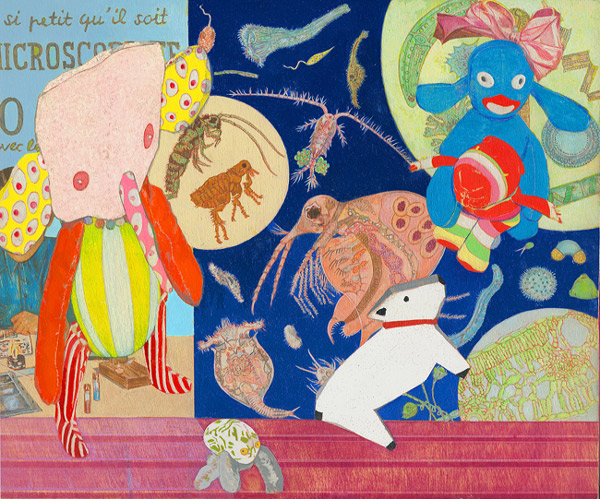The title of the exhibition «Brussels Calling!» is a reference to the Eurovision song festival, the multicultural event by definition. The art exhibition brings together works by ten Belgian or foreign artists, who share the fact of having been at some point in their lives attracted by the life of the Belgian capital. The curator of the exhibit, Dutch artist Berend Hoekstra, imagined this concept after thinking about the various origins of the artists who live in Brussels, as well as about the very varied developments of their respective works.
Bridging the divide between past and present
One main criterion prevailed as the very subjective and personal choices were made without any particular theme in mind, it was artistic quality. The works trigger off a multitude of associations. Far from being an intellectual game, it is rather an immersion into a world where eye and mind can travel in total freedom, a sort of tribute to the human mind. The artists deal with subjects as varied as religion, abstraction, the appeal of the Orient or even the geometry and lightness of the Western world. Various bridges are built between these contemporary works of art and the creations of great masters of the past, such as James Ensor, George Minne and Edgard Tytgat. Indeed, in the work of almost all artists a relation is built with an older one. The artists are not only fascinated by Brussels, but also by its rich history.
Americans, Swiss, Dutch…
Alice Evermore (USA, 1970) is above all a writer of aerodynamic prose who creates al around it a cocoon of figured art, of theatre or of dance. The small paintings by Anne Kellen (Belgium, 1954) are read as still lives carefully built out of the most bizarre objects. Her work seems literary, absurd, naive and surrealist. Edgard Tytgat (1879-1957) was a friend of the Kellens family and Anne grew up with and was literally wrapped up in Tytgat’s graphic work. Albrecht Schnider (Switzerland, 1958) lived in Brussels until 2006: he painted placing himself as practically the sole representative of the figurative movement. Christian Denzler (Switzerland, 1966) arrived in Belgium in 1995, invited by his friend Schnider. His cautious drawings in pen and pencil are particularly bare, full of an introverted nature. With Berend Hoekstra (Netherlands, 1958), the vacuity of the canvas dialogues with the thickness of the coat of paint, unveiling the sublime world of the «abominable beauty». Denzler, Schnider and Hoekstra are put face to face with works by George Minne, and his unique psychological tension.
 A.SCHNIDER,Untitled
Joke Hallin (Belgium, 1980) and Elly Strik (Netherlands, 1961) present parallels with James Ensor. The Belgian’s prints open a window on to a phantasmagorical, mysterious and impenetrable world that is both dismal and fantastic. The Dutch artist closely refers in her work to James Ensor’s drawings and sketches: her Homme des Douleurs is inspired from Ensor’s Christ souffrant. Olga Marie Polunin (Singapore, 1963) drew her ideas from the works of the Flemish primitives and that of her grandfather Vladimir Polunin (1880-1957), who designed projects for costumes of Diaghilev’s Ballets russes. Georges Meurant’s rigorously geometric work (Brussels, 1948) seems to be linked to the Dutch tradition of Mondrian and Van Doesburg. Lastly, the work of Paul Casaer (Brussels, 1967) is characterized by the fascination he has with daily life. Images from our immediate surroundings, from the media or from our collective memory have been taken out of their context, stripped of their details, enlarged, diminished and translated into another matter, in order to seize their magic force.
| 








